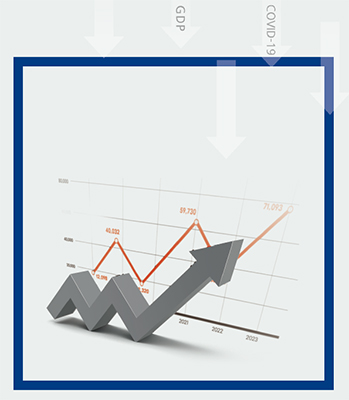
What is “Stagflation”?
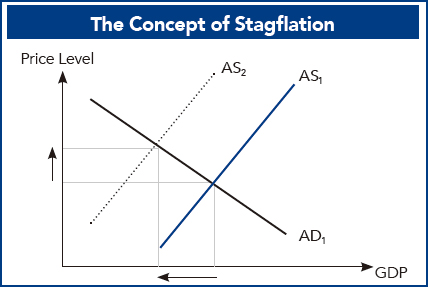
There are concerns that stagflation might occur due to the COVID-19, the Ukraine crisis, and soaring oil prices. Stagflation is a compound word of “stagnation” and “inflation,” which means that economic recession and inflation occur at the same time. Due to various risk factors such as the Ukraine crisis, supply chain disruptions, and China’s slowing growth, the downside risk of growth and the upward risk of prices are expanding at the same time.
Inflation and depression were considered mutually exclusive in Keynesian macroeconomic theory, which was dominant from shortly after World War II to the late 1970s. The relationship between those factors was explained by the Phillips curve, which shows the inverse relationship between unemployment and prices.
According to traditional Keynesian economics, it was a common belief that stagnant economic activity would lead to higher unemployment and lower effective demand, leading to lower prices. As the economy improves and unemployment approaches zero, wages and prices rise. The Phillips curve explains the relationship between unemployment and inflation.
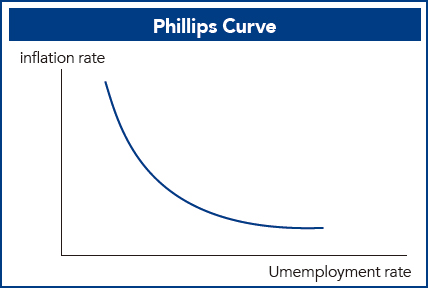
However, in the 1970s, the traditional economic theory was not adaptable to reality. U.S., Japan, and Western powers adopted austerity measures, causing the economy to deteriorate and unemployment to rise, but prices continued to rise. The trend has become more pronounced since the Oil Crisis in 1973, and in 1974, the real economic growth rate of the seven major Organization for Economic Cooperation and Development(OECD) member countries was negative year-on-year, while consumer price growth doubled.
Some people are concerned about stagflation as it is judged that the situation and response of the 1970s seem to repeat recently. The UOS Times would like to compare these concepts of stagflation with the current situation.
A politician of the British Conservative Party, Iain Macleod, used the term “stagflation” in his speech in 1965 during a period of high inflation and high unemployment in Britain. He re-used the term in 1970 and then the media picked it up.
The cause of stagflation
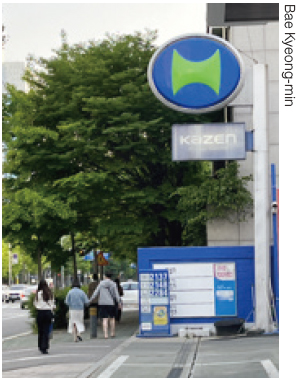
Economists have given two main reasons stagflation occurs. The first type of stagflation, also called cost-push inflation, is triggered when the economy faces an overall increase in costs and wages, such as a sharp rise in crude oil price. A sudden supply shock increases production costs and reduces output, which tends to slow economic growth and increase prices at the same time.
Second, stagflation can occur if the government creates policies that damage the industry by increasing the amount of money too quickly. Both will have to happen at the same time because policies that slow down economic growth usually do not trigger inflation, and policies that cause inflation usually do not slow down economic growth.
These two causes suggested by economists are also applicable to the 1970s stagflation analysis in the West. It began with skyrocketing oil prices, but prices and wages continued to rise as the central bank used overly stimulating monetary policies to cope with the economic downturn.
Global economies of today
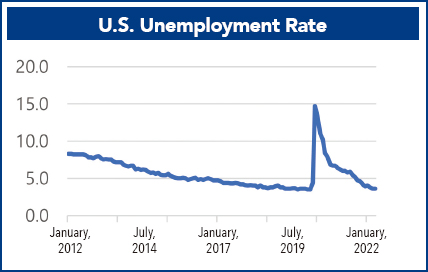
Despite the complex development of various risk factors, the global economy continues to recover. However, while inflation is rising rapidly, recovery momentum has weakened in most countries, including South Korea, and economic uncertainties have also increased. In particular, the Bank of Korea argues that increased geopolitical risks from Russia’s invasion of Ukraine, the spread of Omicron in Asia, and China’s high-intensity quarantine measures not only directly restrict the real economy but also lead to increased production costs and reduced real purchasing power.
In U.S., good employment conditions prevail, with industrial production and retail sales continuing to recover this year, with the unemployment rate approaching the pre-pandemic level. Accumulated consumption capacity and increased labor supply are expected to support the growth, but there is a concern that consumer sentiment will shrink in the process of high inflation and the subsequent normalization of monetary policy.
Since the third quarter of last year, the Chinese economy has been rapidly slowing down due to power shortages, soaring raw material prices, and the Evergrande Group crisis. Despite the improvement in real indicators in January and February, the increase has slowed down in most indicators, including industrial production and fixed investment, due to the strengthening of quarantine measures in March. The internal and external environment is deteriorating, as seen in the soaring raw material prices, high-intensity quarantine measures, and the Ukraine crisis. As a result, concerns over slowing growth are expected to continue due to global production and traffic disruptions.
In the Eurozone, consumption sentiment has been greatly dampened by rising energy prices and growing uncertainties following the Ukraine crisis since March. There are great downside risks, such as the prolonged Ukraine crisis and the possibility of the EU banning imports of Russian oil.
Domestic economic status
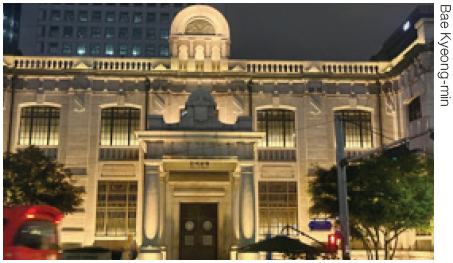
Recently, the domestic economy has continued to recover due to strong exports despite the deepening spread of COVID-19. Exports have continued to flow well, thanks to increased global demand for goods and a solid IT economy, but consumption has slowed down, especially face-to-face service consumption, and investment has weakened due to global supply disruptions.
Unlike the past supply shock period, when nominal wages fell, the correlation between prices and wages has become clear as nominal wages and consumer prices have risen at a similar rate in recent years. Compared to the past, the number of inflation items with a higher spread index of consumer prices and an increase rate exceeding the inflation target level is also increasing rapidly, and this inflation phase is continuing. Therefore, the sustainability of inflation is expected to be greater than expected.
The Bank of Korea has pointed out that economic growth is expected to be slightly below the 3.0 percent forecast in February 2022. In the future growth path, uncertainties related to the Ukraine crisis and the spread of infectious diseases at home and abroad are high. Accelerating the resumption of global economic activities, early easing of the Ukraine crisis, and the government’s implementation of additional stimulus measures are upward risks, while prolonged Ukraine crisis, slowing growth in China, and rapid normalization of monetary policy in major countries are downside risks.
The Bank of Korea predicts that consumer price growth this year will far exceed the forecast level of 3.1 percent in February due to rising raw material prices such as crude oil and grain.
The meaning of the current situation

A sense of crisis over stagflation is not unique to Korea. The World Bank states, “Food and energy prices, which have soared due to the Ukrainian war, will remain in large part over the next three years.” They predict, “There is a risk that the global economy will face stagflation again due to inflation and economic recession that happened in the 1970s.” In the daily economic article, Huh Joon-young, an economics professor at Sogang University, said, “In terms of supply, inflation pressure is getting worse than expected,” adding, “The possibility of stagflation has risen sharply, with monthly consumer inflation approaching 5 percent.”
In the mid to long term, it is advised to establish a policy framework in the direction of revitalizing the corporate economy and increasing quality jobs and real income through corporate tax cuts and various deregulations. Some analysts say that the government should refrain from drawing up an extra budget plan that can encourage inflation, but if it is unavoidable, it should be dispersed after the end of the year to ease inflation. If real purchasing power decreases due to inflation, it could adversely affect private consumption, which is the key to recovering growth this year.
Since the outbreak of COVID-19, prices have risen greatly as supply has decreased due to the global economic downturn. Inflation has been severe, with prices rising over two years. Now, many countries are declaring themselves COVID-19 free and Korea is also returning to the pre-COVID-19 status as the social distancing regulation is being lifted, but there are concerns over stagflation, which overlaps with inflation and economic recession.

In this situation, a new governance system has been launched, and the situation of self-employed people is improving as the social distancing regulation is being lifted. It seems that there is a need to prevent inflation by preventing too much money from being released on the market.
The economy is closely linked to various spheres such as politics, society, and the environment. To understand the economic phenomenon, we should pay attention to various factors that occur in the world in which we live and develop a view of society as a whole. The UOS Times hopes that the University of Seoul(UOS) students continue to pay close attention to the economy and understand the current economic status nationally and internationally.
Bae Kyeong-min
mymnbb0@uos.ac.kr

